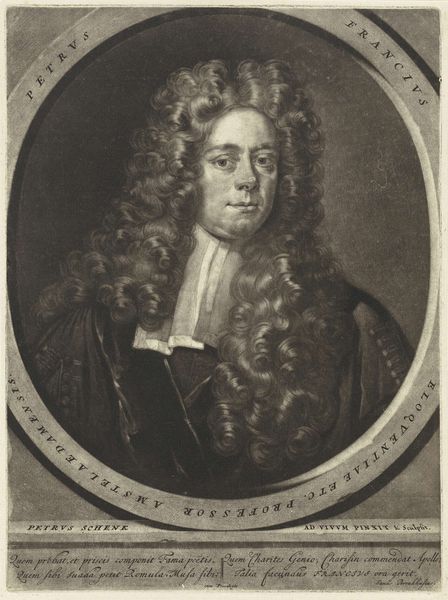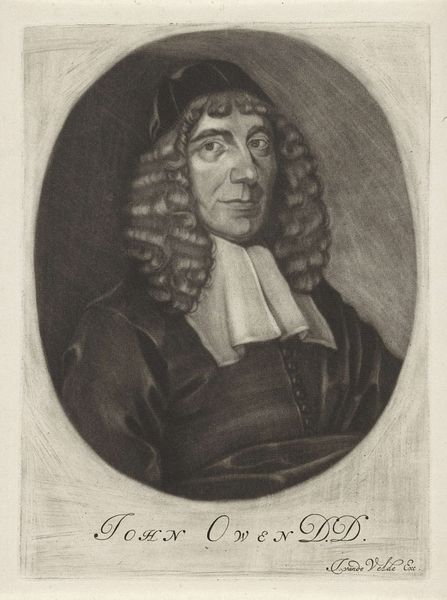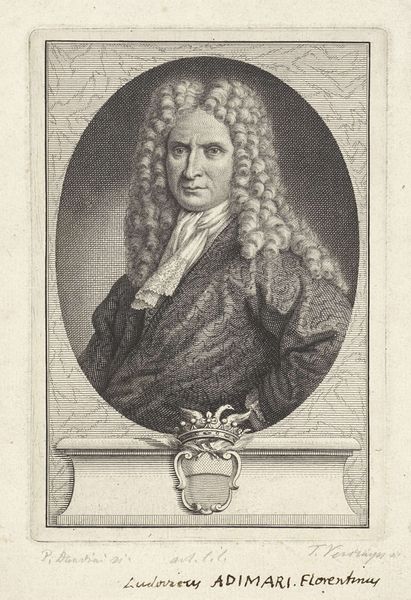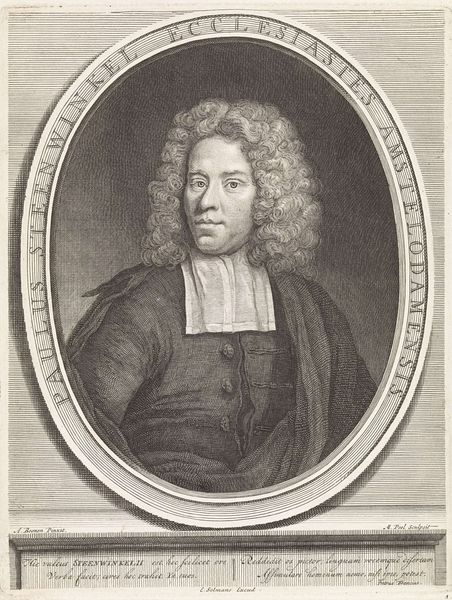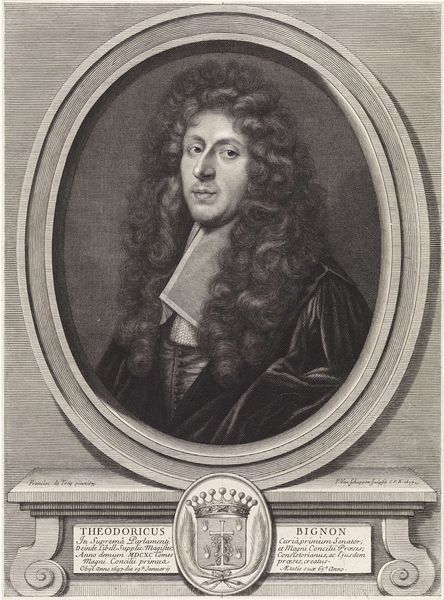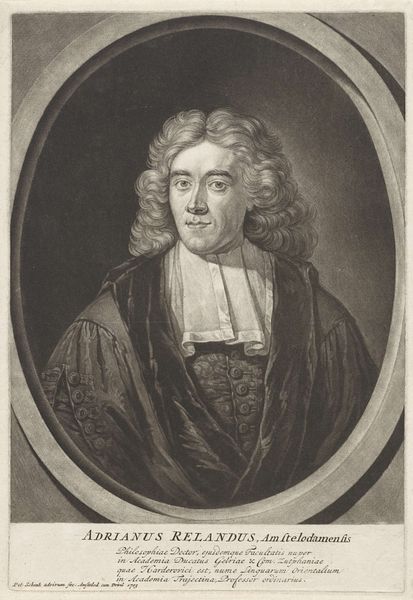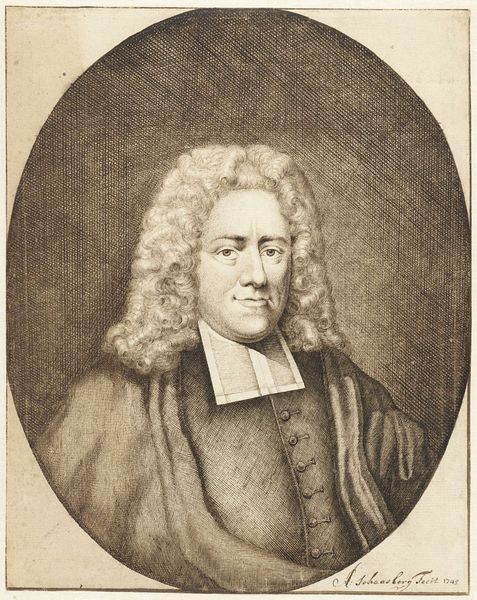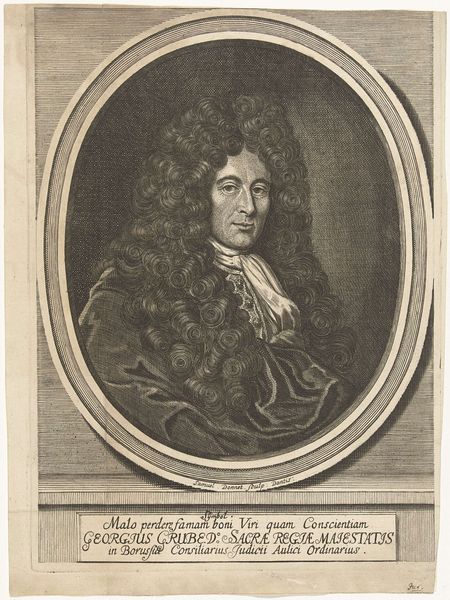
print, charcoal, engraving
#
portrait
#
baroque
# print
#
old engraving style
#
charcoal drawing
#
line
#
portrait drawing
#
charcoal
#
academic-art
#
engraving
#
realism
Dimensions: height 348 mm, width 270 mm
Copyright: Rijks Museum: Open Domain
Editor: This is Juriaen Pool's "Portret van de arts en botanicus Frederick Ruysch" from 1694. It's a print, done with engraving and charcoal I believe. It has this very…stark feel to it, and the rendering of the hair is amazing! What can you tell me about it? Curator: Let’s consider the means of its production. This engraving wasn't just a neutral depiction; it was a commodity, intended for consumption. How do you think this influenced its style? Was the print maker concerned with how many they made in a day? Editor: Well, being a print suggests a degree of reproduction, and therefore distribution beyond a single patron, right? So perhaps that influenced it! And was charcoal the prevalent method? Was is seen as craft rather than fine art? Curator: Precisely. The use of printmaking itself places this portrait within a broader context of material culture. Prints democratized images, making them accessible to a wider audience beyond the elite circles who commissioned painted portraits. Consider the role of workshops. Were these individual artists or larger enterprises focused on output and profit? Editor: I never really thought of printmaking as tied to a "means of production" kind of thought! Like how the workshops would function, or about profit... It’s interesting to think about art this way. Curator: Indeed. Think about the paper, ink, and the labor involved. Each element is imbued with socio-economic meaning. Examining the physical making challenges our conventional separation of "high" art from the supposedly mundane world of craft and commerce. Editor: I guess that puts a whole new spin on just seeing this as a historical portrait of some doctor. Now I am wondering, where did Pool learn to engrave like that? Was the art school connected to mercantile pursuits? It opens up a whole can of worms! Curator: Exactly! Thinking about art this way helps to break down some barriers and conventional boundaries in art history.
Comments
No comments
Be the first to comment and join the conversation on the ultimate creative platform.

